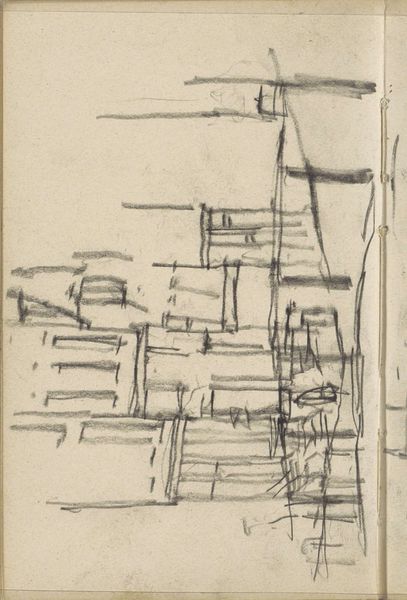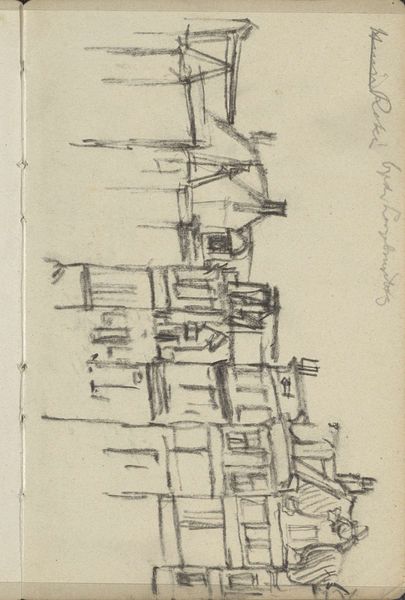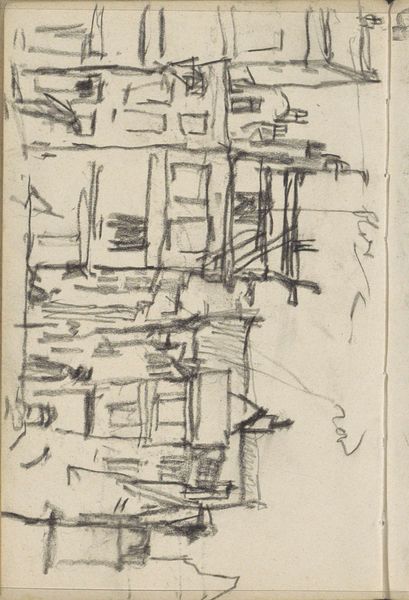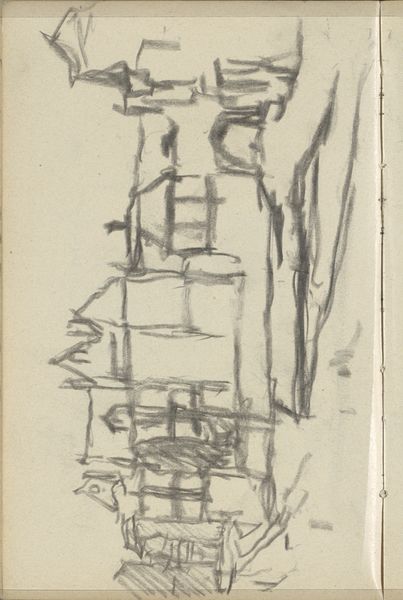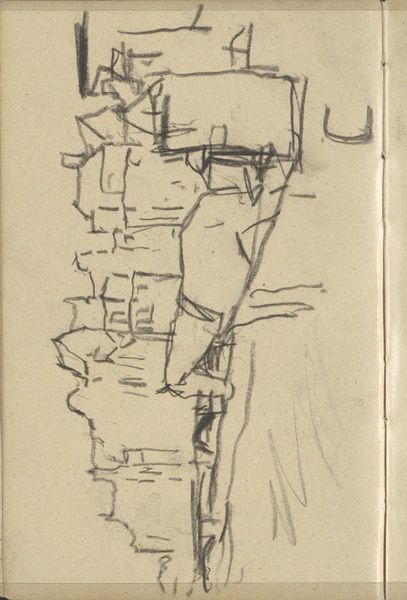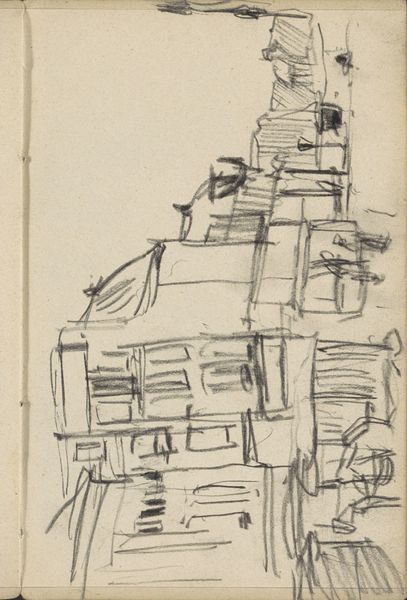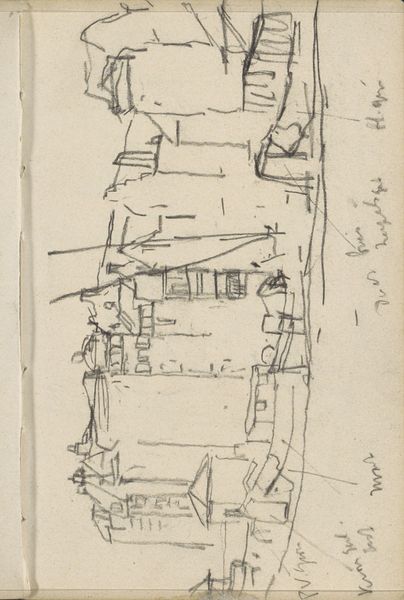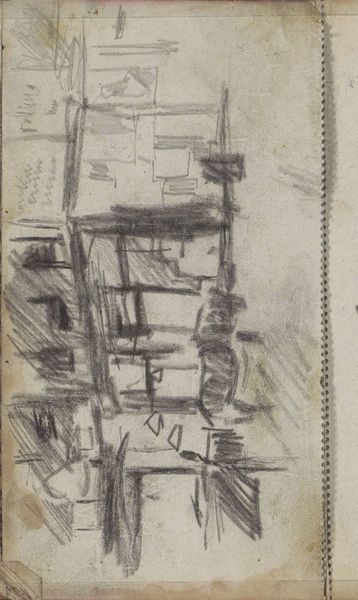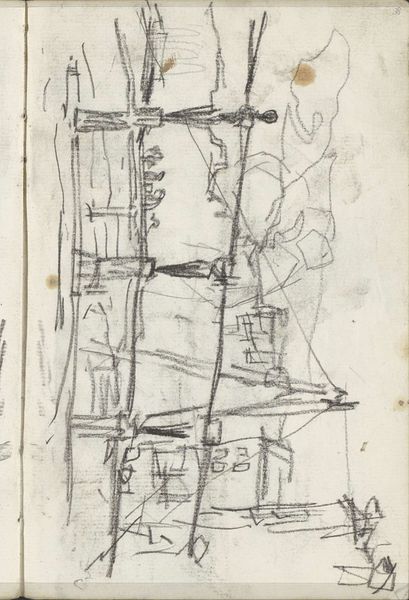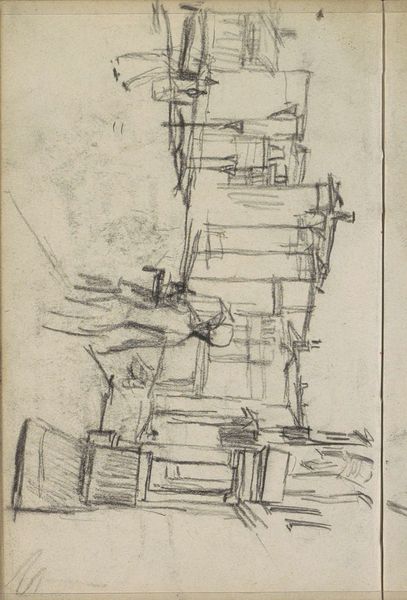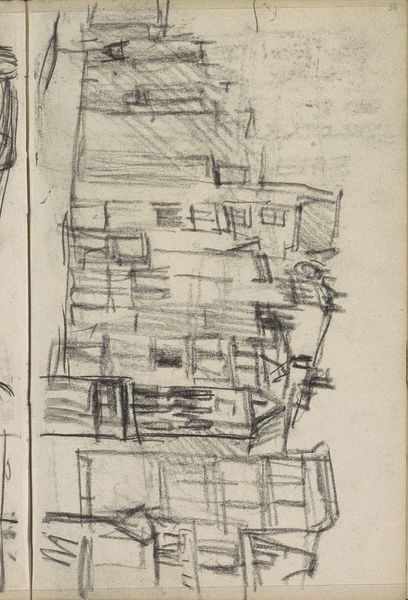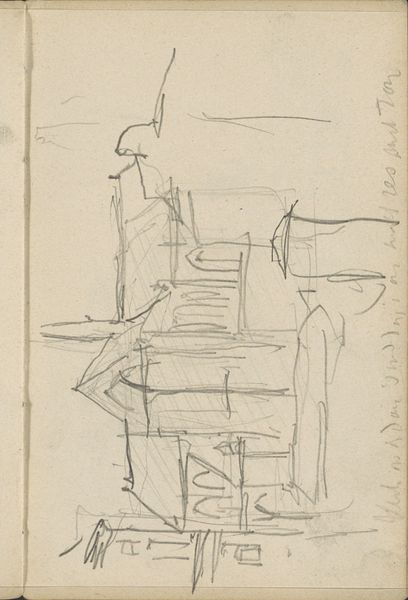
Copyright: Rijks Museum: Open Domain
George Hendrik Breitner sketched this view of the Damrak in Amsterdam with charcoal, capturing a moment in time that echoes through the ages. Look at the way he's represented the buildings. The windows, repeated in rhythmic rows, create a pattern reminiscent of ancient tablets or perhaps even the earliest forms of urban planning seen in ancient cities. Consider how such grids have appeared throughout history—from the planned Roman cities to the modern metropolises. The grid symbolizes order and control, yet also hints at the anonymity and repetition of modern life. This duality evokes a tension, a subconscious unease that mirrors our complex relationship with urban spaces. Breitner's sketch, with its stark simplicity, speaks to the enduring human quest to impose structure on the chaos of existence, a quest as old as civilization itself. The same impulse that drove the architects of ancient cities resonates here, reminding us that every street and building is etched with layers of historical and psychological meaning.
Comments
No comments
Be the first to comment and join the conversation on the ultimate creative platform.

